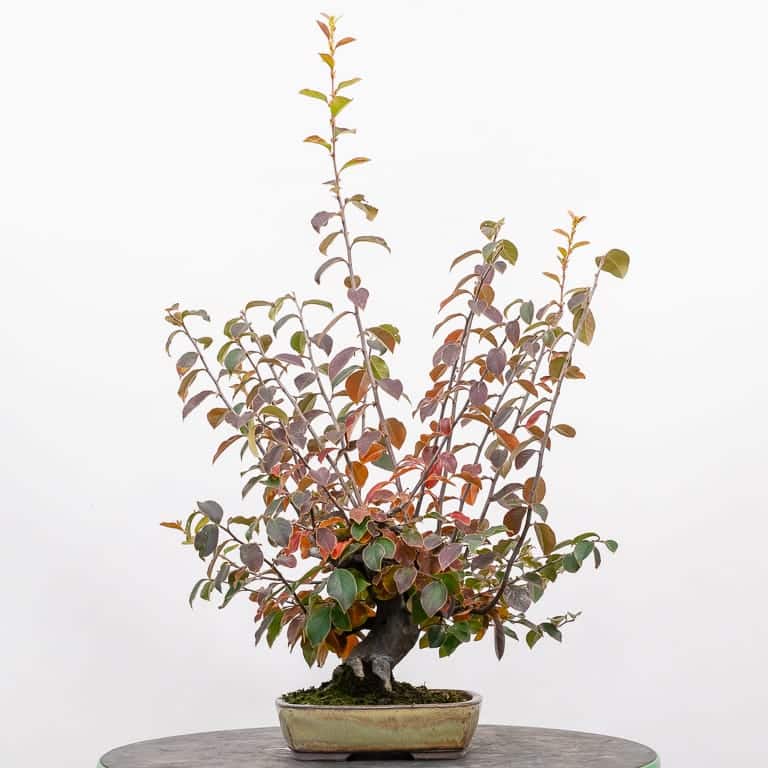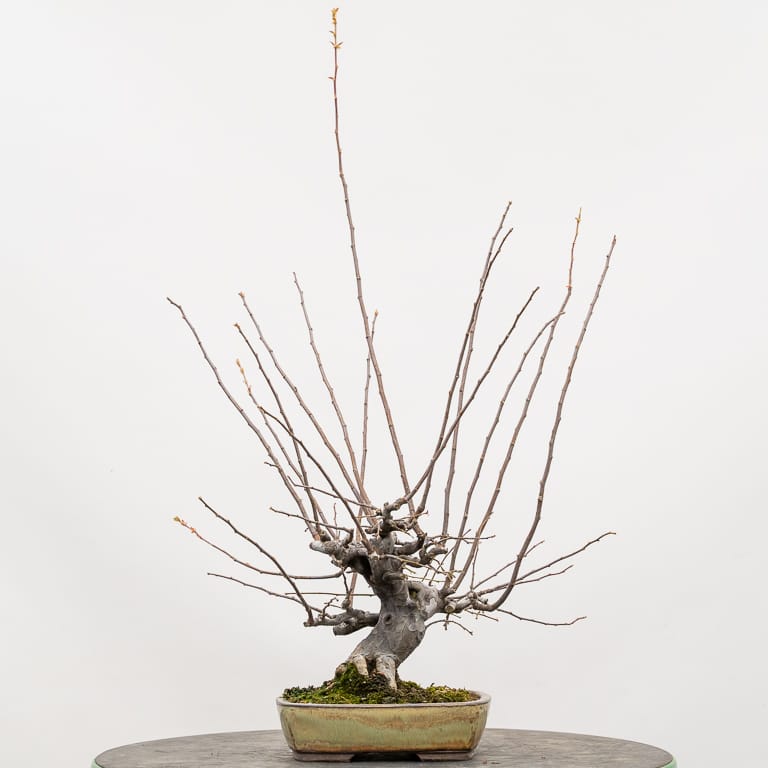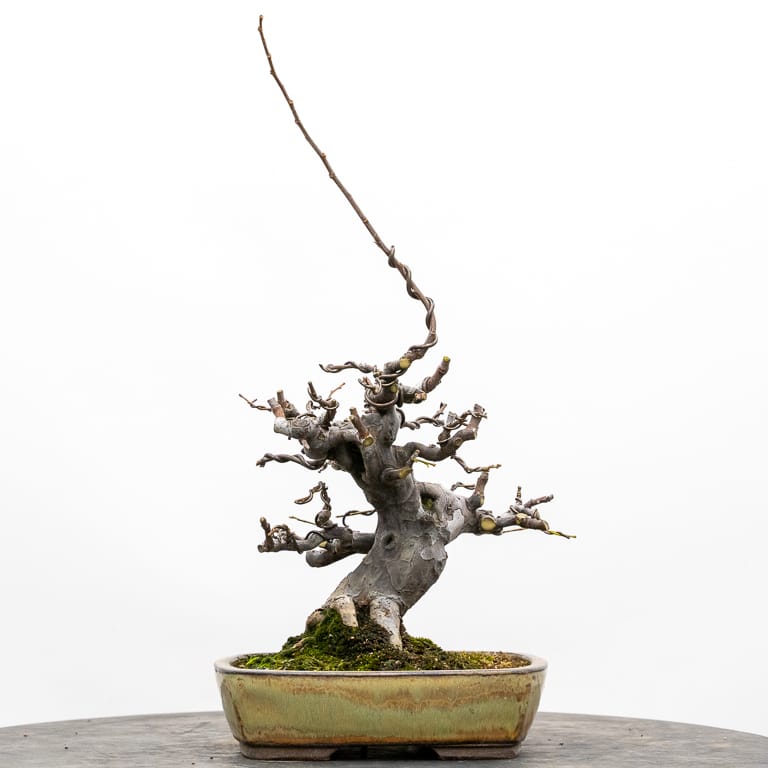Over the past few years I’ve wrestled with a question about developing Chinese quince: how do you encourage branches to bifurcate after pruning?
I haven’t come up with an answer, but I did notice something heartening when I cleaned up an older specimen last week.
Instead of keeping the summer growth in check, I let the tree grow freely after cutback in May (see “Spring cutback” for details). As a result, the tree produced many long vertical shoots.

Long shoots on Chinese quince
After removing the leaves, however, I noticed a handful of slender horizontal shoots.

Slender horizontal shoots visible after removing the leaves
I’ve worked with these branches on young quince for years but hadn’t thought of them as possibly contributing to the refinement of older quince as they can die back when more vigorous shoots are growing nearby.
To give them a chance to compete with the stronger shoots, I pruned the long shoots and wired, but did not prune, the slender ones.

After cutback and wiring – 15″
What made me smile when I saw the slender shoots is that most sprouted from back buds. If they gain vigor next year, they might be part of the answer to how we can improve branch density on Chinese quince.
If they don’t end up contributing, I can take comfort in the incremental progress that I’m seeing in the more vigorous branches.
